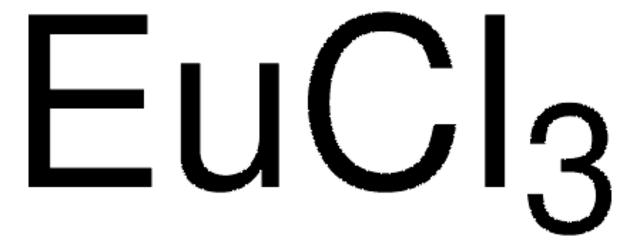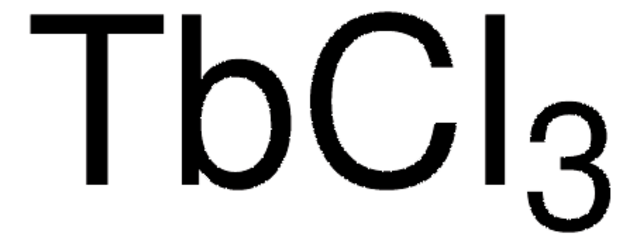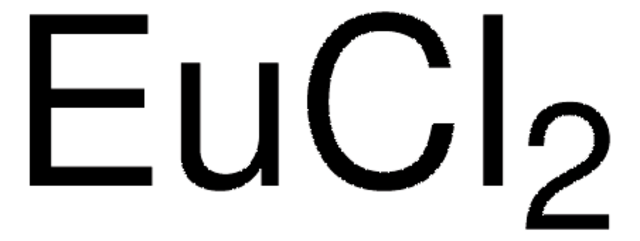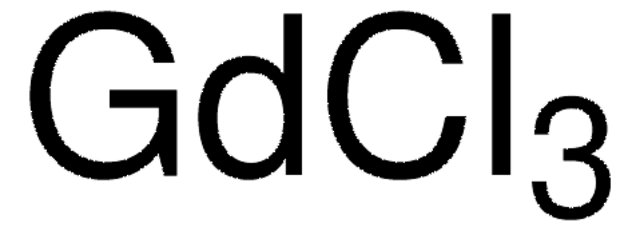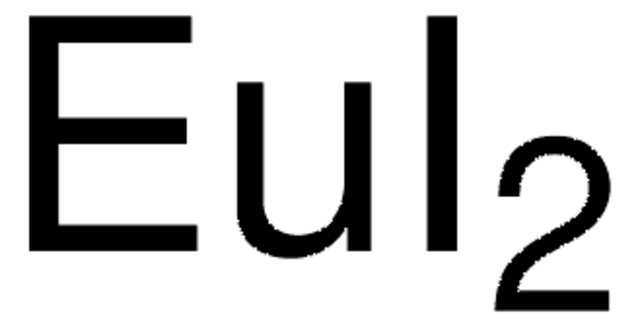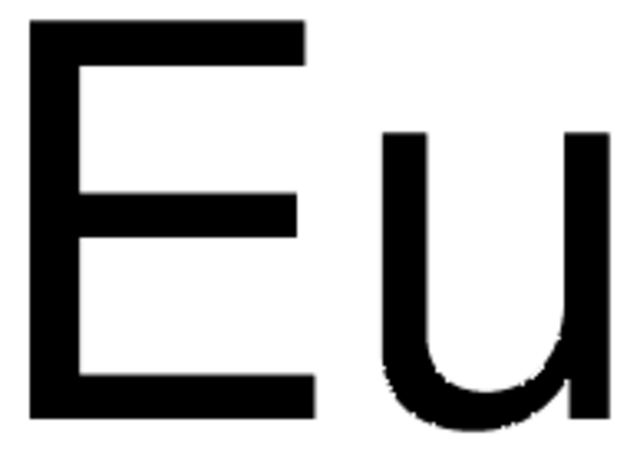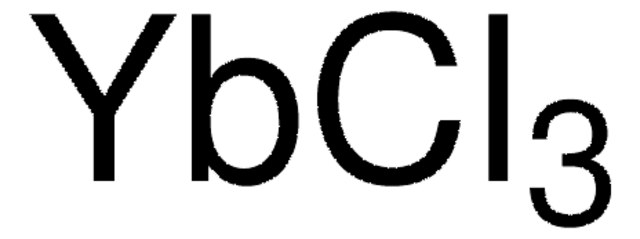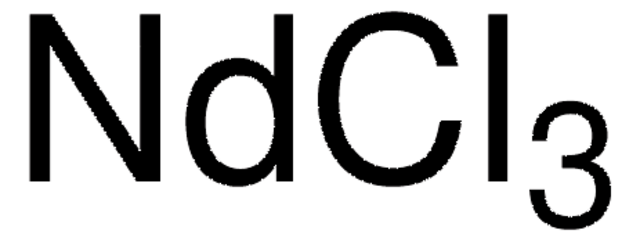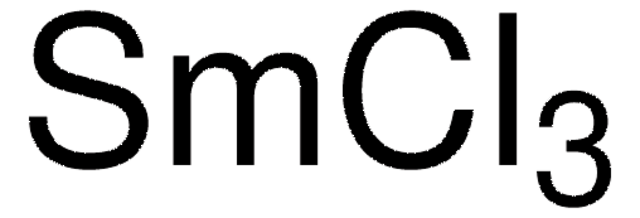429732
Europium(III) chloride
anhydrous, powder, 99.99% trace metals basis
Sinónimos:
Europium trichloride
About This Item
Productos recomendados
grado
anhydrous
Ensayo
99.99% trace metals basis
Formulario
powder
idoneidad de la reacción
reagent type: catalyst
core: europium
impurezas
≤150.0 ppm Trace Rare Earth Analysis
mp
850 °C (lit.)
densidad
4.89 g/mL at 25 °C (lit.)
cadena SMILES
Cl[Eu](Cl)Cl
InChI
1S/3ClH.Eu/h3*1H;/q;;;+3/p-3
Clave InChI
NNMXSTWQJRPBJZ-UHFFFAOYSA-K
¿Está buscando productos similares? Visita Guía de comparación de productos
Aplicación
- Photochemical Recovery of Europium from Non-aqueous Solutions: This study explores the photochemical processes involving Europium(III) chloride, which are significant for applications in material recovery and recycling (B Van den Bogaert, L Gheeraert, 2016).
- Electrochemistry of Europium(III) Chloride in Various Eutectics: Investigation of the electrochemical properties of Europium(III) chloride in different molten salt mixtures, important for developing new materials and nuclear applications (CA Schroll, S Chatterjee, TG Levitskaia, 2017).
Para utilizar con
Código de clase de almacenamiento
11 - Combustible Solids
Clase de riesgo para el agua (WGK)
WGK 2
Punto de inflamabilidad (°F)
Not applicable
Punto de inflamabilidad (°C)
Not applicable
Equipo de protección personal
Eyeshields, Gloves, type N95 (US)
Elija entre una de las versiones más recientes:
¿Ya tiene este producto?
Encuentre la documentación para los productos que ha comprado recientemente en la Biblioteca de documentos.
Los clientes también vieron
Artículos
Thermoelectric Performance of Perovskite-type Oxide Materials
The prevailing strategies for heat and electric-power production that rely on fossil and fission fuels are having a negative impact on the environment and on our living conditions.
The rare earth elements impact nearly everyone in the world. All of the people living in advanced technological countries and almost all those living in third world countries utilize the rare earths in their everyday living—the car that one drives (gasoline is refined from oil using rare earth catalysts and catalytic converters reduce the polluting emissions from the automotive exhaust), watching the news on TV (the red and green colors in TV screens), the telephones and computers we use to communicate (the permanent magnets in speakers and disc drives), just to name a few examples.
Nuestro equipo de científicos tiene experiencia en todas las áreas de investigación: Ciencias de la vida, Ciencia de los materiales, Síntesis química, Cromatografía, Analítica y muchas otras.
Póngase en contacto con el Servicio técnico
